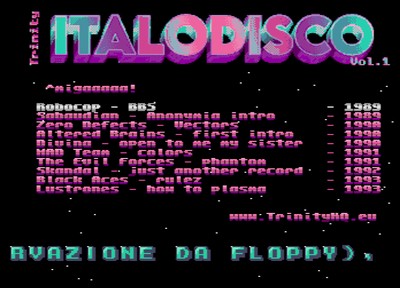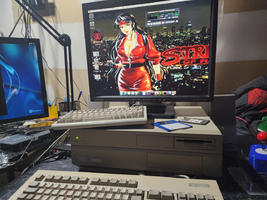So several Amiga related updates, Several months ago I got to be an early adopter of a new Apollo-Computer based accelerator card for the Amiga 2000 (Salamander), this one slots into the CPU expansion slot of the A2000. It's basically the V4 Firebird (For the A500), just on an expansion board that places the connectors of the accelerator to the back ports. I ended up with a GIGA version, with the 1GB of system ram.
- Apollo 68080 CPU: With 64-bit AMMX acceleration for exceptional performance.
- RAM: 512 MB (Standard Version) or 1024 MB GIGA Version
- Super AGA Chipset: RTG and TrueColor 32-bit, enabling you to play all AGA games on your Amiga 500/2000.
- Integrated FlickerFixer: Supports Amiga PAL/NTSC for a flicker-free display.
- Audio Quality: 8/16-bit audio with 56 kHz and 24-bit mixing for superior sound.
- Maggie 3D Unit: Impressive 3D graphics and performance.
- FastKick: Optimized Kickstart routines for faster system boot.
- 2 FastIDE/DVD/CompactFlash Controllers: For rapid data transfer and additional storage options.
- Micro SD Card Slot: For easy storage expansion and data exchange.
- 2 USB-1 Ports: For mouse and joypad.
- Network Card with DMA: High-performance network connections.
- 100 Mbit Ethernet: Fast network connection for online communication and data transfer.
It's an impressive card, and now slotted to my new pristine A2000 and it gives proper AGA graphics, audio out of the HDMI port. Great system....
-------
However, I had a left over V2 Vampire Accelerator and my old A2000 system with some expansion cards was just sitting there... As the Salamander card basically does everything and there is no need for expansion cards, I wanted my other A2000 to have a different approach, It was going to utilize the A2000 expansion capabilities a bit more. I picked up a PC Bridgeboard Single-board computer, an A2286AT, which is an 80286 CPU board that interfaces both the Amiga and PC side of the A2000, as the A2000 from it's inception was designed to host these bridgeboards that gave the system PC capabilities. By default the A2000 has only one 16 bit ISA slot, the other two were 8-bit only, but they left it so you could solder in the 16-bit sockets if you so choose, so that was the first thing I did.
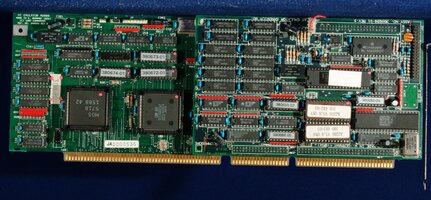
By default the A2286AT card allows you to use the PC side of the system seamless along with workbench, but the graphics at best are just CGA and at speeds not good for any gaming. So I slotted in a SVGA card, Sound Blaster 16 and something called the Picomem, it's an 8-bit ISA card that is a memory expansion, but also allows you too boot off HDD and Floppy images on an SD card along with giving you USB mouse/Joystick and other features... I also broke out my old 17" Hitachi RasterOPs SVGA monitor and using an HDMI to VGA converter for the Vampire card along with a VGA switch box to switch between the PC VGA and Amiga output. Ironically I'm having more fun with this system than my pristine A2000 with the fastest accelerator on the market...
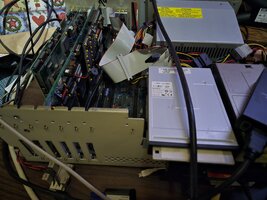
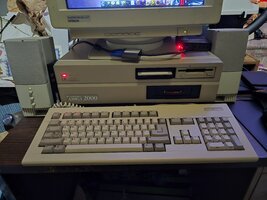
This Amiga 2000 Specs:
Amiga-Side:
Vampire V2 V500+ Acellerator
Individual X-Surf-100 Ethernet card with Rapid-Road USB Controller.
Commodore A2286AT PC Bridgeboard
Amiga Floppy Drive (Right)
Front loaded CF card for Amiga OS (Bottom drive bay slot)
PC-Side:
Tseng Labs ET3000 SVGA video card
Sound Blaster 16
PicoMEM Expansion Card
PC 1.44MB Floppy drive (left Black).
